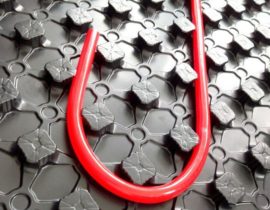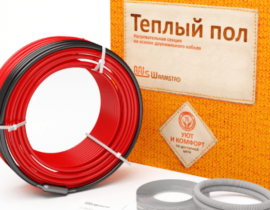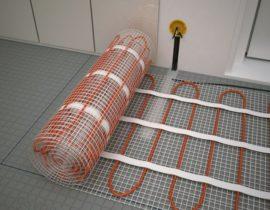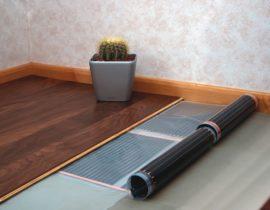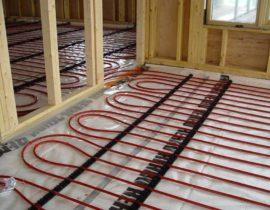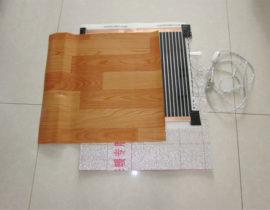After the completion of glazing and insulation, the balcony does not become equal in terms of comfort to living rooms. Until heating is organized, the balcony can only be used in the warm season.
There are different ways to create a cozy and comfortable environment, but the most effective of them is underfloor heating. since the balcony area is relatively small, the installation and maintenance costs of this heating option will be affordable for everyone.
However, there are technical and administrative restrictions that you need to be aware of. In addition, there are some technical features that require consideration during installation. Consider the procedure for assembling a warm floor on a balcony more carefully.
Content
What type of underfloor heating can be used on the balcony
Underfloor heating is a heating element distributed over the entire area of the room and placed under the floor covering. There are different designs of underfloor heating:
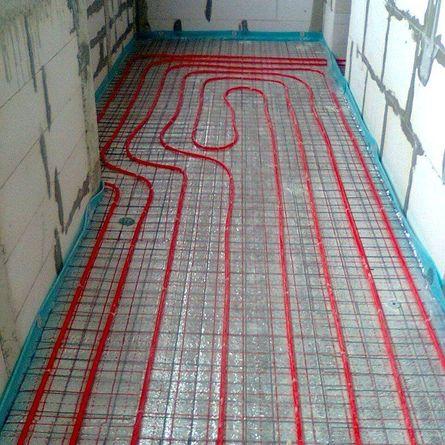
water
This is the pipeline through which the coolant circulates. By itself, a water-heated floor does not generate thermal energy and is completely dependent on the quality and stability of the coolant supply;

electric
This is a heating appliance that independently generates thermal energy.
Both types depend on external sources - a water-heated floor needs a coolant supply, and an electric floor cannot work without being connected to a power supply network. At the same time, it is forbidden to connect a water heated floor to the central heating system, as this is regarded as the output of radiators to the balcony. This option is not provided for by the current rules and is considered as connecting an unplanned load, which reduces the quality of services provided to other subscribers.
Electric underfloor heating can be used in the apartment if the condition of the wiring allows it.
There are several varieties:
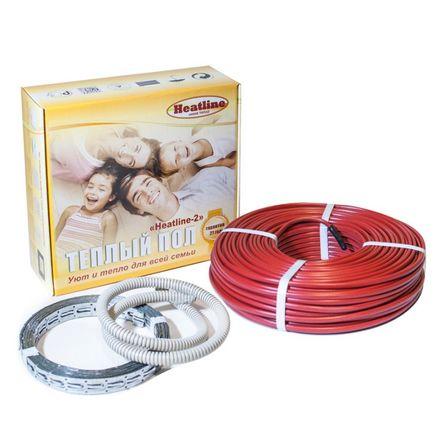
heating cable. When connected to the network, its temperature rises, providing heating of the floor covering;
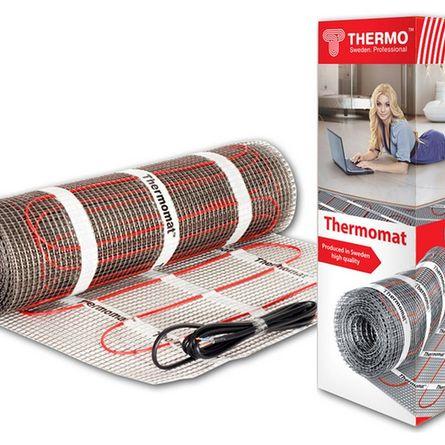
heating mats (one- and two-core);
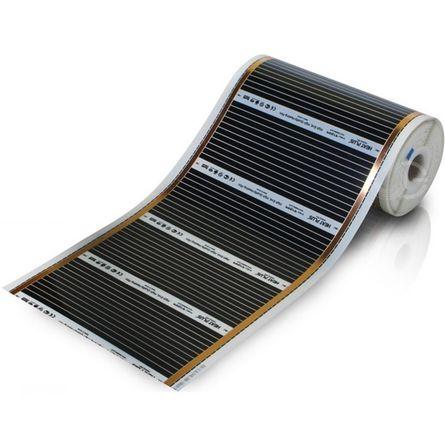
infrared film heat-insulated floor.
As a rule, electric types of underfloor heating are chosen for heating balconies. They are much easier to install, cheaper (although they require a monthly payment for the electricity used), and easier to repair. Most often, infrared film underfloor heating is used, which is characterized by maximum ease of installation. If ceramic tiles are planned as a floor covering, a heating cable or mats are used.
Advantages and disadvantages of underfloor heating on the balcony
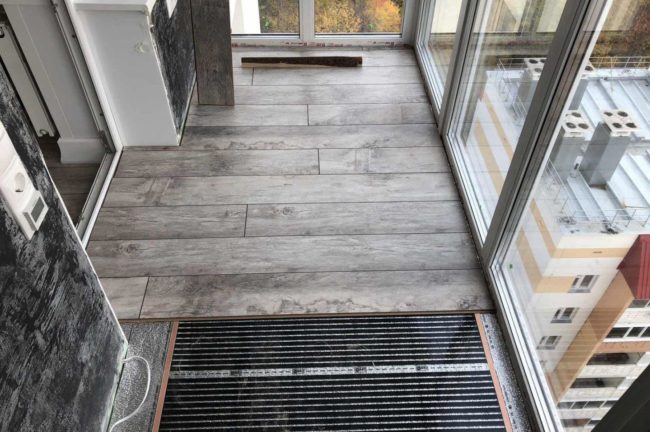
Advantages and disadvantages of underfloor heating on the balcony
- compactness, lack of specialized appliances and heaters on the walls;
- high efficiency. The area of the balcony is small, and it is possible to ensure a comfortable temperature with the help of relatively small capacities;
- underfloor heating is much less than conventional radiator systems;
- the ability to adjust and fine-tune the heating mode;
- comfortable, pleasant feeling of walking on the floor with bare feet.
- installation of a warm floor on a balcony requires preliminary laying of high-quality thermal insulation;
- there are restrictions on some designs;
- the use of a warm floor makes sense only when installing double-glazed windows, single glazing attracts condensate too actively;
- electric underfloor heating creates a considerable consumption of electricity, and water requires the supply of a coolant;
- Not all heaters are compatible with all floor coverings.
Despite the existing shortcomings, installing a warm floor on a balcony is considered the most effective way of heating. There are no heaters, no distribution pipelines, no convection that dries the air excessively.
Mounting Features

It is necessary to choose the design of a warm floor and choose a suitable floor covering for it
Installation of a warm floor on a balcony has its own specifics. It is necessary to take into account the design itself and the operating conditions of the balcony slab, which is open from below and takes on all temperature differences. If the balcony of the neighbors from below is glazed and insulated, the operating conditions of the balcony slab become softer, but this does not affect the technology for installing a warm floor - if the neighbors forget to close the window on the balcony in winter, the temperature will quickly equalize with the outside, and the balcony slab will be in the initial conditions.
In addition, it is necessary to choose the design of a warm floor and choose a suitable floor covering for it. There are also limitations here.If ceramic tiles are chosen as the floor covering, either a water-heated floor or heating mats (heating cable) will do.
Infrared warm floor cannot be laid under “wet” adhesive solutions, therefore, only laminate, carpet or linoleum is suitable for it.
As a rule, water systems are not laid on the balcony. Users are not satisfied with the design itself - the need to use a separate collector, laying supply and return pipelines. In addition, the water circuit will require a complete set of valves, a mixing unit to adjust the heating mode, and other elements of the system. These are quite expensive nodes that require installation indoors and take up a lot of space. Electrical designs in this regard are much more convenient and simpler.
Preparation and insulation of the balcony slab
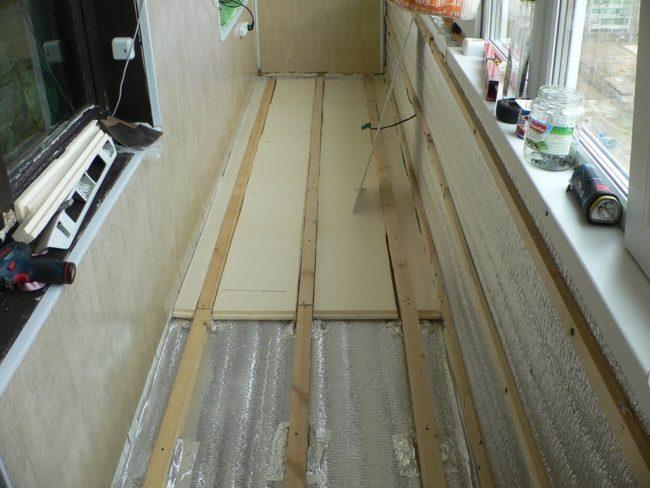
Laying waterproofing - you can use almost any film
Before laying the underfloor heating, it is necessary to carry out preparatory work and insulate the balcony slab. This is a mandatory procedure, otherwise all the work of the heater will be spent on the base.
The surface of the ceiling plate should be freed from the old coating, remove the linoleum or carpet. If the tile is laid and it holds well, you can do without dismantling - in this case, the base will be quite rigid.
The next step is to install waterproofing. You can use any film, up to a polyethylene sleeve. The main thing is that the canvas is solid. The edges are wrapped on the walls to a height of 20-25 cm, then they are cut.
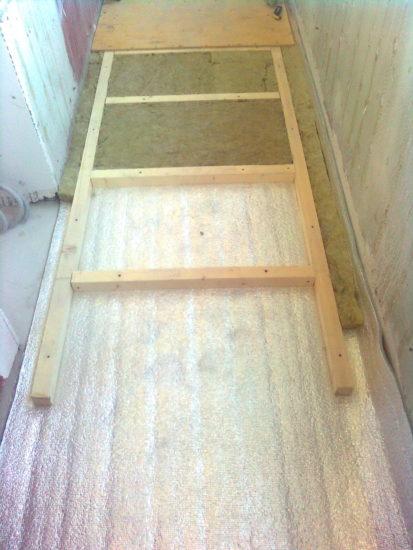 Logs are laid on the surface of the balcony slab. First, two longitudinal strips are laid, fixing them on the edge of the long sides of the balcony.Then the crossbars are laid, the length of which allows you to spread the long bars and securely fasten them between the parapet and the balcony wall. The step of the crossbars should be around 60 cm - this is the width of the foam and foam boards. Such a step will give sufficient rigidity and ensure economical consumption of thermal insulation.
Logs are laid on the surface of the balcony slab. First, two longitudinal strips are laid, fixing them on the edge of the long sides of the balcony.Then the crossbars are laid, the length of which allows you to spread the long bars and securely fasten them between the parapet and the balcony wall. The step of the crossbars should be around 60 cm - this is the width of the foam and foam boards. Such a step will give sufficient rigidity and ensure economical consumption of thermal insulation.
It is recommended to use penoplex as a heat insulator. Styrofoam is somewhat worse, but it is much cheaper than foam plastic, which determines the choice of many users.
The thickness of the plates must be at least 5 cm, this will reliably cut off the cold plate from the heating circuit. The insulation is tightly placed between the crossbars. Gaps and cracks, if any, are filled with mounting foam.
After laying the thermal insulation on the logs, a platform made of sheet material (plywood, chipboard, OSB, etc.) is installed. It is necessary to ensure sufficient rigidity of the flooring. If it bends when walking, double the thickness of the sheet material (you can glue two layers, which will give a completely rigid and motionless platform.
On this, the preparation and insulation of the balcony slab are considered complete, you can proceed to further steps.
Installation of a water heated floor
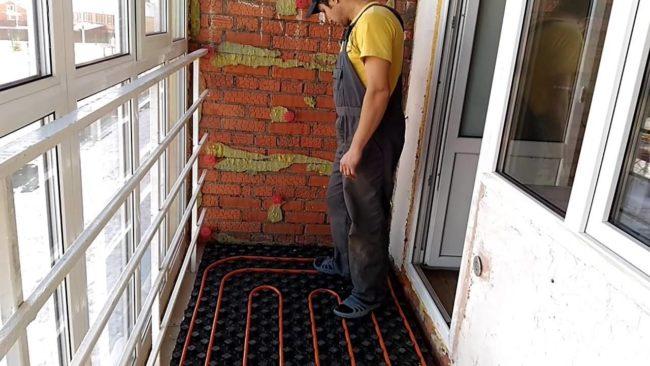
Features of installing a water-heated floor on a balcony
Laying of a water-heated floor is carried out after assembling the mixing units and the collector. Everything must be prepared for the supply of coolant under operating pressure. This is important, since pouring the screed requires filling the pipeline.
The process of installing a warm floor is not particularly difficult. A construction mesh is laid on the surface of the rough flooring, to which a loop is attached using nylon clamps or ordinary thin wire.The size of the balcony is small, therefore, one segment is enough.
A polyethylene or polypropylene pipe with a diameter of 16-20 mm is used. It is laid with a snake or a spiral, fixed on a grid, after which it is poured with a layer of screed 30-50 mm thick. When it hardens, tiles are laid on top - ceramics or porcelain stoneware.
There is another option, when a water-heated floor is not laid in a screed. Then wooden blocks are placed between the tubes, on which waterproofing is laid and sheet material is laid. Laminate, linoleum or carpet can be laid on it. It must be taken into account that the flooring acts as a heat insulator, and the effectiveness of such a warm floor drops noticeably.
Installation of electric floor heating
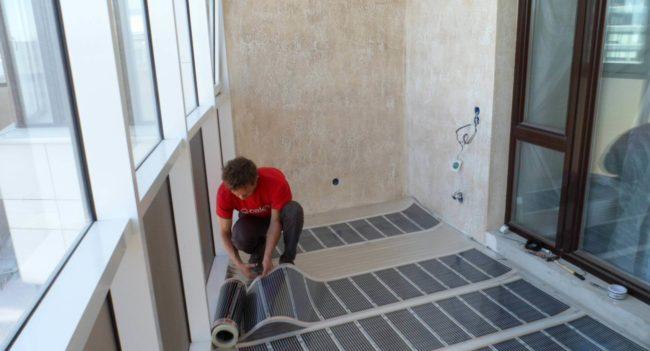
Features of installing an electric underfloor heating on a balcony
Laying of electric underfloor heating is carried out taking into account the floor covering. If it is linoleum, carpet or laminate, use the dry installation method under the flooring. In this case, a grid is laid on the surface of the subfloor and a heating cable is attached to it (or a heating mat is simply spread without a grid). Then wooden bosses are laid, the thickness of which is a couple of millimeters greater than the diameter of the cable. Sheet material is attached to them and the floor covering is laid.
Laying electric underfloor heating under tiles made in almost the same way as installing a water-heated floor. However, here you can simplify the procedure - do without pouring the screed and immediately lay the tiles on a thick adhesive layer. It will hide the cable (mat) and provide sufficient rigidity for the base under the tile.
This option allows you to save energy - the small thickness of the adhesive layer contributes to lower consumption for its own heating of the warm floor cake.
Laying the infrared film web is much easier. A waterproofing film or a substrate under the laminate is laid on the subfloor. Then a film warm floor is laid, on which a coating is laid - laminate, carpet, linoleum). No ties or other procedures are required, which greatly speeds up the installation process.
FAQ
For laying on a warm floor, special types of coatings are needed. This refers to laminate, carpet and linoleum. They must be designed to work with underfloor heating (on the back of the icon is a snake with arrows). If you plan to lay tiles, any type will do.
The power of the heating cable is higher, it can be used as the main source of heating. The infrared film floor is weaker, although its efficiency is no less high. At the same time, the installation of the film is much easier and does not require any effort. If the balcony has wooden floors, it is better to choose an infrared warm floor.
There are no special rules here. You can place it on the balcony or install it in the room, if it seems more convenient.
Only a substrate is placed on top of the film and the floor covering is laid. Sheet materials are not needed, as they will take away most of the radiation and reduce the efficiency of heating the room.
It depends on the condition of the wiring and its age. In old houses, the wiring is not designed for high power, so laying a separate line for the heating cable is mandatory here. If the house is new, you can get by with the existing lines. However, experts recommend playing it safe and laying your own line, regardless of the age or condition of the electrical network in the apartment.
Video tip:


